For Bread Week 32, I finally made Peter Reinhart's Focaccia again. I've made this recipe a few times, but never as a full pan of bread.
[This post contains affiliate links. I may make a commission for purchases made through links on this post.]
Most breads from The Bread Baker's Apprentice (affiliate link) take more than 1 day to make. This is no exception, but where most breads simply involve mixing the dough and letting it rise briefly on the first day before refrigerating the dough overnight, this focaccia involves making the dough, stretching it out 3 times, and shaping and oiling the dough before refrigerating it. This extra involvement on the non-baking day is why it's taken me several weeks to finally bake this bread. I knew that once I did, though the extra work on the non-baking day would be worth it.
This bread was delicious, just as I'd remembered. I may have over-proofed the dough, and the bread rose dramatically. It had a uniform springy texture throughout. The bread was soft and tender from all of the oil, and made a great accompaniment to soup. I halved the quantity of oil from earlier versions of the bread, and wish I hadn't. Previously I'd used the full half-cup of herb oil, which made the bread herby and flaky on top and bottom - super delicious. This bread was still delicious, but didn't have the same decadence and richness that I've come to desire. If you don't use a full ½ cup of oil, I recommend adding toppings. Even so, with the bread without toppings and partially-oiled, Alex and I polished off the bread within days.
I still really enjoyed this bread. It is far better than anything you'll get in a store. Although the bread takes some time, it is really worth the effort.
📖 Recipe
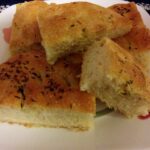
- 22.5 ounces bread flour
- 2 teaspoon salt
- 2 teaspoon yeast (active or instant)
- 6 tablespoons olive oil
- 16 ounces water (2 cups)
- ¼ - ½ cup herb oil
- ½ cup olive oil
- ¼ cup fresh herbs (or 4 to 4 ½ teaspoons dried herbs) [typo fixed 4/6/19]
- ¾ teaspoon salt
- ¾ teaspoon granulated garlic (or 1-2 cloves minced garlic)
- ¼ teaspoon black pepper
-
Mix together flour, salt, yeast, olive oil, and water on low with the dough hook of a stand mixer. Once a wet, sticky ball forms, knead on medium for 5-7 minutes to create a smooth, sticky dough; you will have dough on your fingers if you touch it. The dough should clear the sides of the bowl but will stick to the bottom. If it doesn't clear the sides of the bowl, add a little flour while mixing until it does.
-
Oil a large (10-cup) container (preferably flat and rectangular) and scrape the dough into it. Let the dough rest for 5 minutes. Wet or oil your hands, and stretch the dough on both ends until it is twice the length. Fold each end over on the center, as if you're folding a letter. Spray with oil, cover with plastic wrap.
-
Let the dough rest for 30 minutes, then repeat the stretching and folding. Let the dough rest another 30 minutes, and repeat the stretching and folding for a final time. Let the dough ferment for an hour. It will grow but may not double in size.
-
Line a 12x17 inch sheet pan with parchment paper. Use a whole sheet, even if you need to trim the sides; don't combine partial sheets like I did. Coat the parchment with ¼ cup olive oil (or less if you feel calorie-conscious). Transfer the dough onto the parchment paper; keep it rectangular if you can.
-
Top with half of the herb oil. Use your fingertips to dimple the dough and spread it to fill the pan, trying to keep the thickness of the dough uniform. If dough is too springy, let it rest for 15 minutes. (I did not do this.) The dough doesn't have to fill the pan entirely as it will spread as it rises, but do cover the entire surface with oil.
-
Cover the pan loosely with plastic wrap and refrigerate the dough overnight. (Your fridge will smell like herbs in the meantime.)
-
Remove the pan from the fridge about 3 hours before you plan to bake it. Drizzle with the remaining herb oil and dimple it in. This should allow you to fill the pan entirely, although I didn't try too hard to fill mine. Cover the pan loosely with plastic wrap and let rest at room temperature for 3 hours, or until the dough doubles in size. It will be about 1 inch tall.
-
Preheat oven to 500F. Sprinkle dough with salt. Place pan in oven, then reduce temperature to 450F. Bake for 10 minutes, rotate the pan 180 degrees, and bake for another 5-10 minutes, until bread turns a light golden brown.
-
Remove pan from oven and transfer focaccia to a cooling rack. (Or, skip the cooling rack and cool directly on the pan.) Cool focaccia for at least 20 minutes before cutting or serving.
Reinhart says you can add toppings as well, although I haven't. He suggests adding most things after removing the dough from the fridge, so that they can be nestled safely by the dough and won't fall off. Anything moist should be sauteed first to remove excess moisture. The exceptions are perishable items, such as meat and high-moisture cheese, which should be added right before baking. Dry cheese can be added after the 15-minute mark and baked for another 5 minutes.

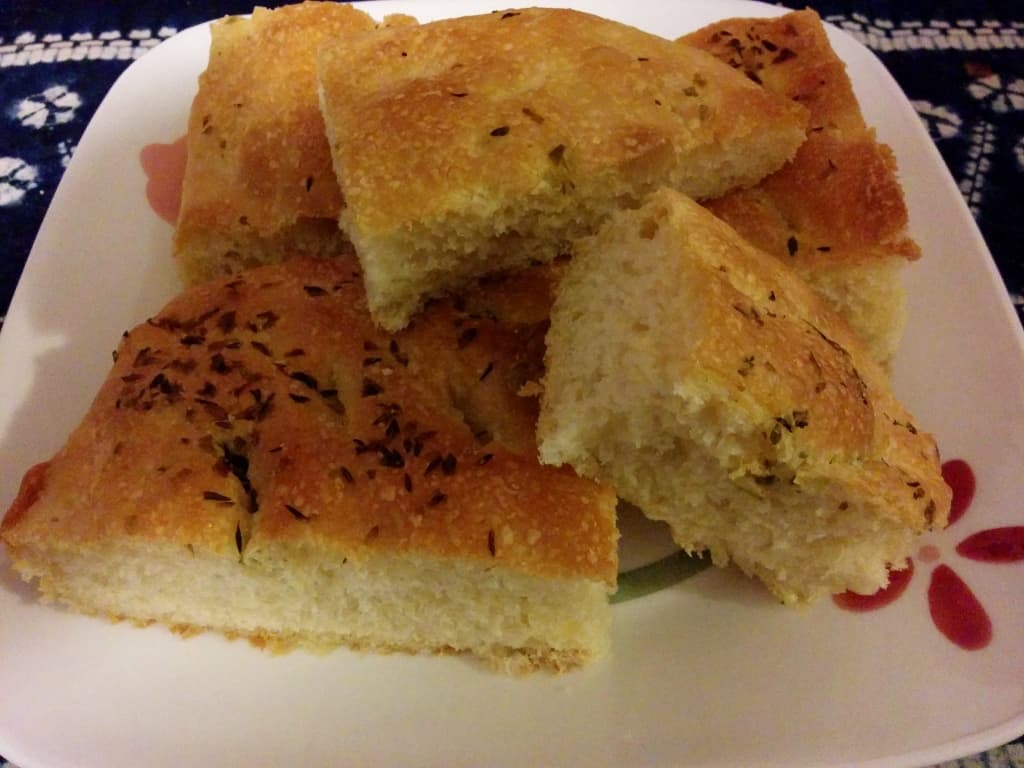

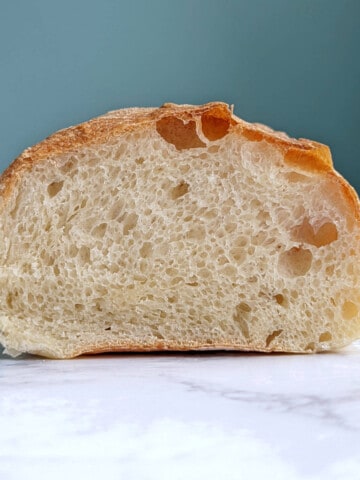
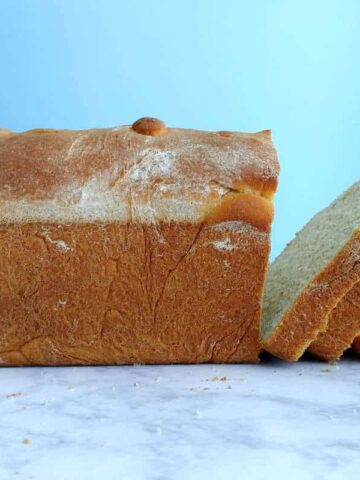
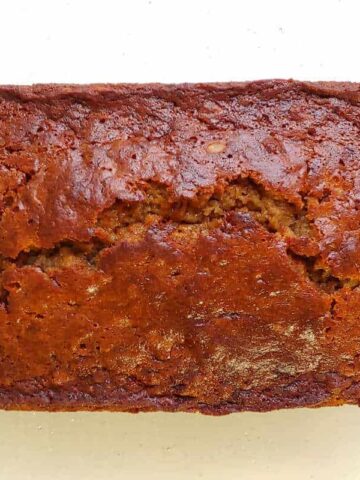

Tina says
I baked this focaccia last night, but at 225C, which was the maximum temperature on my oven, for about 20-25 minutes and it was completely dry inside and the herb oil had no flavor. Before it went into the oven the dough seemed well proofed and moist. Did I just misread when it was baked and ultimately overbaked it or was my oven temperature just too low to keep it from drying out?
Leona Konkel says
I reread the recipe. Did you use dried herbs? I had a typo in the herb oil; it should have read 1 1/2 tablespoons dried herbs, not teaspoons. I apologize and will fix it.
On the baking time, I think it was overbaked. 225C is around 437F, close enough to 450F that if your oven temperature fluctuates it might have gotten up to 450F. I keep an inexpensive oven thermometer in my oven, and in most houses we've rented, the older ovens run about 10F-25F hot. Also, if you've used a convection setting (if it applies; I've never used one), things will bake more quickly/too hot. Often my baked goods are done at the shorter end of the baking times.